June 30, 2024
La importancia de los rituales familiares en mi vida y mi
negocio
Como padre de familia y empresario, he aprendido que los rituales
familiares no solo son fundamentales para fortalecer los lazos
familiares, sino que también son esenciales para el éxito y la armonía
en mi vida y en mi negocio. A lo largo de los años, estos rituales han
proporcionado una base sólida sobre la cual he construido tanto mi vida
personal como profesional. En este artículo, quiero compartir cómo estos
rituales han influido en mi vida y mi empresa, y por qué creo que son
tan importantes.
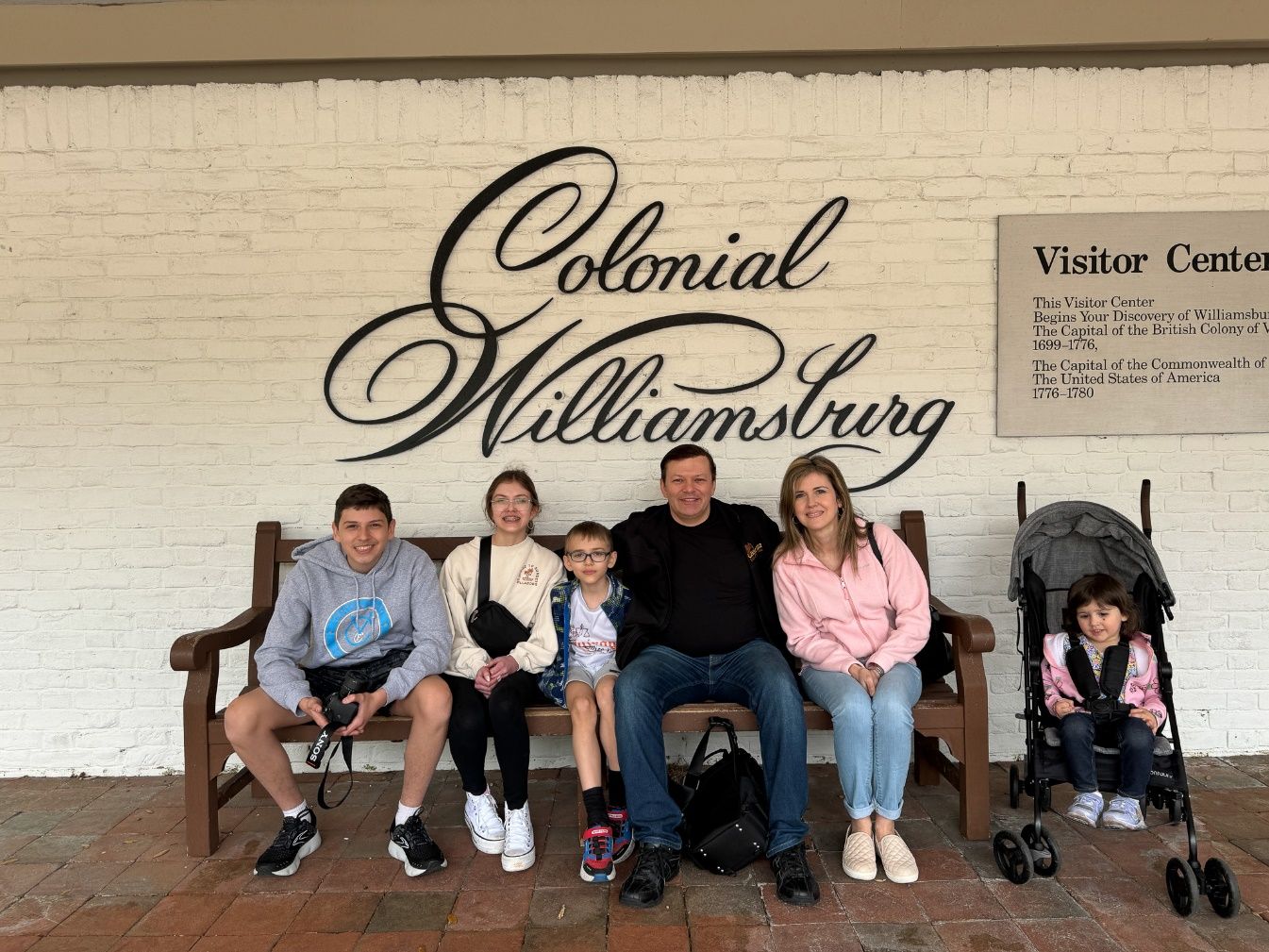 La
base de todo: La familia
La
base de todo: La familia
Desde que formé una familia con Casey, hemos valorado la importancia
de establecer rituales que nos unan y nos permitan disfrutar de momentos
significativos juntos. Con siete hijos, sabemos lo importante que es
tener estructuras y rutinas que nos ayuden a mantenernos conectados. Uno
de nuestros rituales más queridos es el de las cenas familiares. No
importa lo ocupados que estemos con el trabajo y las actividades
diarias, siempre hacemos un esfuerzo por cenar juntos todas las noches.
Estos momentos nos permiten compartir nuestras experiencias del día,
reírnos y apoyarnos mutuamente.
Además de las cenas familiares, otro ritual que apreciamos mucho es
el de las historias antes de dormir. Cada noche, dedicamos tiempo para
leer un libro o contar historias a nuestros hijos. Este momento no solo
fortalece nuestro vínculo, sino que también fomenta el amor por la
lectura y la imaginación en nuestros hijos. A lo largo de los años,
estos pequeños rituales han creado recuerdos inolvidables y han
establecido una base sólida de amor y confianza en nuestra familia.
Tardes de domingo: Recargando energías
Los domingos por la tarde son sagrados para nosotros. Es un momento
en el que nos desconectamos del trabajo y nos enfocamos en estar juntos.
A veces vamos al parque, otras veces simplemente nos quedamos en casa
jugando juegos de mesa o viendo una película. Estas tardes son cruciales
para recargar nuestras energías y prepararnos para la semana que viene.
Personalmente, siento que estas tardes me ayudan a desconectar del
estrés del trabajo y a recordar por qué hago lo que hago.
Estas tardes también nos brindan la oportunidad de hablar sobre
nuestros sueños y planes futuros. Discutimos nuestras metas personales y
familiares, y cómo podemos apoyarnos mutuamente para alcanzarlas. Este
tiempo de calidad no solo fortalece nuestra unidad familiar, sino que
también nos ayuda a mantener una perspectiva equilibrada y a valorar lo
que realmente es importante en la vida. Las tardes de domingo se han
convertido en un pilar fundamental para nuestra salud mental y
emocional.
Integrando la familia y el negocio
Uno de los mayores desafíos que he enfrentado como empresario es
encontrar un equilibrio entre mi vida profesional y personal. Sin
embargo, he descubierto que los rituales familiares pueden desempeñar un
papel crucial en este equilibrio. Por ejemplo, involucrar a mis hijos en
el negocio en pequeñas maneras, como llevarlos a la oficina de vez en
cuando o pedirles su opinión sobre ciertas decisiones, no solo les da
una visión del mundo empresarial, sino que también fortalece nuestro
vínculo. Esto también les enseña valores importantes como el trabajo
duro, la responsabilidad y la importancia de la familia.
En mi negocio, he implementado ciertos rituales que reflejan los
valores familiares. Tenemos reuniones semanales donde celebramos los
logros del equipo y discutimos cómo podemos mejorar. Estos rituales
crean un sentido de comunidad y pertenencia entre los empleados, similar
al que tenemos en nuestra familia. Al integrar estos valores y rituales
en el ámbito laboral, he podido crear un ambiente de trabajo positivo y
colaborativo que beneficia tanto a la empresa como a los empleados.
Celebraciones y tradiciones
Las celebraciones y tradiciones son una parte importante de nuestra
vida familiar. Desde los cumpleaños hasta las festividades como Navidad
y Acción de Gracias, cada evento es una oportunidad para crear recuerdos
y fortalecer nuestros lazos. En el negocio, también hemos adoptado
ciertas tradiciones, como celebrar los logros del equipo y organizar
eventos para fomentar el compañerismo. Estas celebraciones no solo nos
unen como equipo, sino que también nos recuerdan la importancia de
reconocer y valorar el esfuerzo de cada uno.
En nuestra familia, cada cumpleaños se celebra con una fiesta
especial donde todos participamos en la planificación y decoración.
Estas celebraciones no solo son divertidas, sino que también enseñan a
nuestros hijos la importancia de la colaboración y el trabajo en equipo.
En el ámbito empresarial, organizamos eventos anuales que permiten a los
empleados y sus familias conocerse mejor y compartir momentos agradables
fuera del entorno laboral. Estas tradiciones fortalecen el sentido de
comunidad y compromiso dentro de la empresa.
La enseñanza de valores a través de los
rituales
Como padre, uno de mis principales objetivos es enseñar a mis hijos
valores que les servirán para toda la vida. Los rituales familiares son
una excelente manera de inculcar estos valores. Por ejemplo, durante
nuestras cenas familiares, a menudo discutimos temas importantes y
compartimos nuestras opiniones y experiencias. Estos momentos son
oportunidades para enseñarles sobre la importancia de la honestidad, la
integridad y el respeto. En el negocio, trato de llevar estos mismos
valores y de crear una cultura empresarial que los refleje.

En el entorno laboral, promovemos la honestidad y la transparencia a
través de prácticas abiertas y justas. Fomentamos un ambiente donde
todos se sienten valorados y escuchados. Estos valores, aprendidos y
reforzados a través de nuestros rituales familiares, se trasladan al
negocio, creando una cultura empresarial sólida y ética. Creo firmemente
que la enseñanza de valores a través de los rituales no solo fortalece a
la familia, sino que también contribuye al éxito y la sostenibilidad de
cualquier negocio.
Adaptando los rituales a la vida moderna
La vida moderna puede ser agitada y a veces es difícil mantener los
rituales familiares. Sin embargo, creo que es esencial adaptarlos y
encontrar maneras de mantenerlos vivos. En nuestra familia, hemos
encontrado que incluso pequeños gestos, como enviar un mensaje de texto
cariñoso durante el día o tener una videollamada cuando estoy de viaje,
pueden marcar una gran diferencia. En el negocio, también hemos
implementado rituales que se adaptan a nuestras necesidades, como
reuniones semanales para mantenernos alineados y enfocados.
La clave está en ser flexible y creativo. A veces, un ritual puede
evolucionar para adaptarse a nuevas circunstancias. Por ejemplo, durante
la pandemia, transformamos nuestras reuniones familiares presenciales en
videollamadas para mantenernos conectados con familiares lejanos. En el
negocio, implementamos herramientas digitales para facilitar la
comunicación y la colaboración a distancia. Estas adaptaciones nos han
permitido mantener nuestras tradiciones y fortalecer nuestros vínculos,
incluso en tiempos de cambio.
Reflexionando sobre el impacto de los rituales
Al reflexionar sobre el impacto de los rituales en mi vida y mi
negocio, me doy cuenta de cuánto han contribuido a mi bienestar y éxito.
Estos rituales no solo nos han ayudado a mantenernos unidos como
familia, sino que también han proporcionado una estructura y una
estabilidad que han sido cruciales para mi desarrollo personal y
profesional. En el negocio, los rituales han fomentado un ambiente de
trabajo positivo y han contribuido a la cohesión del equipo.
 A
lo largo de los años, he visto cómo estos rituales han evolucionado y se
han adaptado a nuestras necesidades cambiantes. Sin embargo, la esencia
de estos rituales, que es crear momentos significativos y fortalecer los
lazos, ha permanecido constante. Estoy convencido de que estos rituales
continuarán desempeñando un papel vital en nuestras vidas y en el éxito
de nuestro negocio en el futuro. Invito a todos los padres y empresarios
a reflexionar sobre la importancia de los rituales en sus propias vidas
y a encontrar maneras de integrarlos en su rutina diaria.
A
lo largo de los años, he visto cómo estos rituales han evolucionado y se
han adaptado a nuestras necesidades cambiantes. Sin embargo, la esencia
de estos rituales, que es crear momentos significativos y fortalecer los
lazos, ha permanecido constante. Estoy convencido de que estos rituales
continuarán desempeñando un papel vital en nuestras vidas y en el éxito
de nuestro negocio en el futuro. Invito a todos los padres y empresarios
a reflexionar sobre la importancia de los rituales en sus propias vidas
y a encontrar maneras de integrarlos en su rutina diaria.
June 29, 2024
How Listening to Music Positively Influences Your
Productivity
Since I can remember, music has been an essential part of my life.
Growing up in Colombia, I recall the mornings filled with vallenatos and
cumbias that my mother would play while preparing breakfast. The music
filled our house, creating an atmosphere of joy and energy that
propelled us to start the day on the right foot. This deep connection
with music has been a constant in my life, and today, it is a key tool
that I use to enhance my productivity at work.

As an immigration lawyer and entrepreneur, my day-to-day can be quite
hectic. Responsibilities and stress can accumulate quickly, and finding
ways to stay focused and motivated is crucial. This is where music comes
into play. Over the years, I have discovered that listening to music
while I work not only makes me feel happier but also significantly
improves my productivity.
One of the reasons why music is so powerful is its ability to evoke
emotions. When I hear a song I like, it transports me to another place
and time. It can make me recall happy moments, people I love, or even
inspire me to dream big. This emotional connection helps me maintain a
positive attitude, even when facing difficult or tedious tasks.
For example, when I am reviewing legal documents or drafting
arguments for a case, I often play classical or instrumental music in
the background. These soft and structured melodies create an atmosphere
of calm and concentration. They allow me to immerse myself completely in
my work, blocking out distractions and helping me maintain a steady flow
of thought.
Another important aspect of music is its ability to motivate us. When
I need an energy boost, I turn to my favorite rock or electronic music
playlists. These rhythm-filled and energetic songs give me the push I
need to keep going, especially in the afternoons when fatigue starts to
set in.
I remember one particularly busy afternoon at the office, with
multiple meetings and a stack of documents to review. I felt my energy
waning, but instead of giving up, I decided to put on my rock playlist.
With each song, I felt my energy and focus return. What could have been
an exhausting afternoon turned into a productive and efficient work
session.

Working in the field of immigration can be emotionally draining.
Helping families reunite or individuals find a new home in the United
States is rewarding but also carries great responsibility. In moments of
stress, music acts as an escape valve.
Sometimes, after a particularly difficult day, I find myself in my
office after hours, listening to soft ballads or jazz. These melodies
help me relax, process the day’s events, and release accumulated stress.
Music becomes a form of therapy, allowing me to return the next day
renewed and ready to face new challenges.
One of the keys to using music effectively at work is choosing the
right music for each task. I have experimented with different genres and
styles, and I have found that certain types of music are more suitable
for certain activities.
For example, when I need to do creative tasks like writing an article
or developing a new business strategy, I prefer instrumental music.
Without distracting lyrics, I can better focus on my thoughts and let my
creativity flow. In contrast, for more repetitive or administrative
tasks, music with lyrics can be a pleasant companion that keeps me
entertained and motivated.
In addition to listening to music on my own, I have also discovered
that it can be a useful tool for teamwork. In the office, I sometimes
play ambient music in the background during meetings or brainstorming
sessions. This creates a relaxed and welcoming environment, fostering
collaboration and creativity among the team.
I remember a strategic planning session with my team where we were
all a bit tense due to an important project. I decided to play soft
music in the background, and the change in the atmosphere was
noticeable. Everyone relaxed a bit more, ideas started to flow more
freely, and by the end of the meeting, we had made great progress.
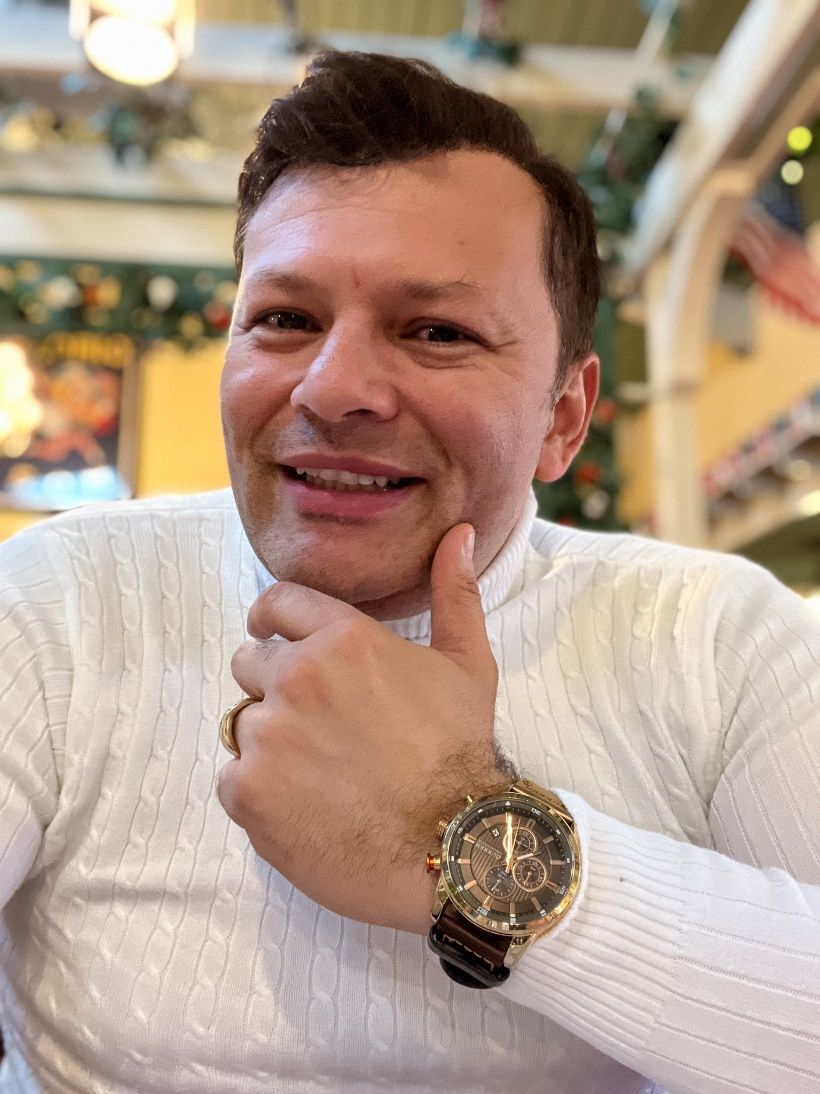
I am not the only one who has noticed these benefits. Numerous
studies support the idea that music can improve productivity. Music can
activate the release of dopamine, the neurotransmitter associated with
pleasure and reward, making us feel good and more motivated to work.
Additionally, it can help improve concentration.
Listening to music while I work has been one of the best decisions I
have made to improve my productivity and overall well-being. It not only
helps me stay focused and motivated but also provides a necessary relief
from stress and creates a positive environment for both myself and my
team.
If you have not yet tried incorporating music into your work routine,
I encourage you to do so. Find the genres and styles that inspire you
the most and create your own playlists for different moments of the day.
You will be surprised how something as simple as listening to your
favorite song can transform your workday and help you reach new levels
of productivity and satisfaction.
June 29, 2024
Cómo escuchar música influye positivamente en tu
productividad
Desde que tengo memoria, la música ha sido una parte esencial de mi
vida. Creciendo en Colombia, recuerdo las mañanas llenas de vallenatos y
cumbias que mi madre ponía mientras preparaba el desayuno. La música
llenaba nuestra casa, creando una atmósfera de alegría y energía que nos
impulsaba a comenzar el día con el pie derecho. Esta conexión tan
profunda con la música ha sido una constante en mi vida, y hoy en día,
es una herramienta clave que utilizo para mejorar mi productividad en el
trabajo.

Como abogado de inmigración y empresario, mi día a día puede ser
bastante agitado. Las responsabilidades y el estrés pueden acumularse
rápidamente, y encontrar maneras de mantenerme enfocado y motivado es
crucial. Aquí es donde entra en juego la música. A lo largo de los años,
he descubierto que escuchar música mientras trabajo no solo me hace
sentir más feliz, sino que también mejora significativamente mi
productividad.
Una de las razones por las que la música es tan poderosa es su
capacidad para evocar emociones. Cuando escucho una canción que me
gusta, me transporta a otro lugar y tiempo. Puede hacerme recordar
momentos felices, personas que amo o incluso inspirarme a soñar en
grande. Esta conexión emocional me ayuda a mantener una actitud
positiva, incluso cuando estoy enfrentando tareas difíciles o
tediosas.
Por ejemplo, cuando estoy revisando documentos legales o redactando
argumentos para un caso, suelo poner de fondo música clásica o
instrumental. Estas melodías suaves y estructuradas crean un ambiente de
calma y concentración. Me permiten sumergirme completamente en mi
trabajo, bloqueando distracciones y ayudándome a mantener un flujo
constante de pensamiento.
Otro aspecto importante de la música es su capacidad para motivarnos.
Cuando necesito un impulso de energía, recurro a mis playlists favoritas
de rock o música electrónica. Estas canciones llenas de ritmo y energía
me dan el empuje necesario para seguir adelante, especialmente durante
las tardes cuando la fatiga empieza a hacerse sentir.
Recuerdo una tarde particularmente ocupada en la oficina, con
múltiples reuniones y una pila de documentos que revisar. Sentía que mi
energía se agotaba, pero en lugar de rendirme, decidí poner mi lista de
reproducción de rock. Con cada canción, sentí cómo mi energía y enfoque
regresaban. Lo que podría haber sido una tarde agotadora se convirtió en
una sesión de trabajo productiva y eficiente.

El trabajo en el ámbito de la inmigración puede ser emocionalmente
agotador. Ayudar a familias a reunirse o a individuos a encontrar un
nuevo hogar en los Estados Unidos es gratificante, pero también conlleva
una gran responsabilidad. En momentos de estrés, la música actúa como
una válvula de escape.
Algunas veces, después de un día particularmente difícil, me
encuentro en mi oficina después de horas, escuchando baladas suaves o
jazz. Estas melodías me ayudan a relajarme, a procesar los eventos del
día y a liberar el estrés acumulado. La música se convierte en una forma
de terapia, permitiéndome regresar al día siguiente renovado y listo
para enfrentar nuevos desafíos.
Una de las claves para utilizar la música de manera efectiva en el
trabajo es elegir la música adecuada para cada tarea. He experimentado
con diferentes géneros y estilos, y he encontrado que ciertos tipos de
música son más adecuados para ciertas actividades.
Por ejemplo, cuando necesito hacer tareas creativas como redactar un
artículo o desarrollar una nueva estrategia para el negocio, prefiero la
música instrumental. Sin letras que distraigan, puedo concentrarme mejor
en mis pensamientos y dejar que mi creatividad fluya. En cambio, para
tareas más repetitivas o administrativas, la música con letras puede ser
una compañía agradable que me mantiene entretenido y motivado.
Además de escuchar música por mi cuenta, también he descubierto que
puede ser una herramienta útil para el trabajo en equipo. En la oficina,
a veces pongo música ambiental de fondo durante las reuniones o sesiones
de brainstorming. Esto crea un ambiente relajado y acogedor, fomentando
la colaboración y la creatividad entre el equipo.
Recuerdo una sesión de planificación estratégica con mi equipo donde
todos estábamos un poco tensos debido a un proyecto importante. Decidí
poner música suave de fondo, y el cambio en el ambiente fue notable.
Todos se relajaron un poco más, las ideas empezaron a fluir más
libremente, y al final de la reunión, habíamos logrado grandes
avances.
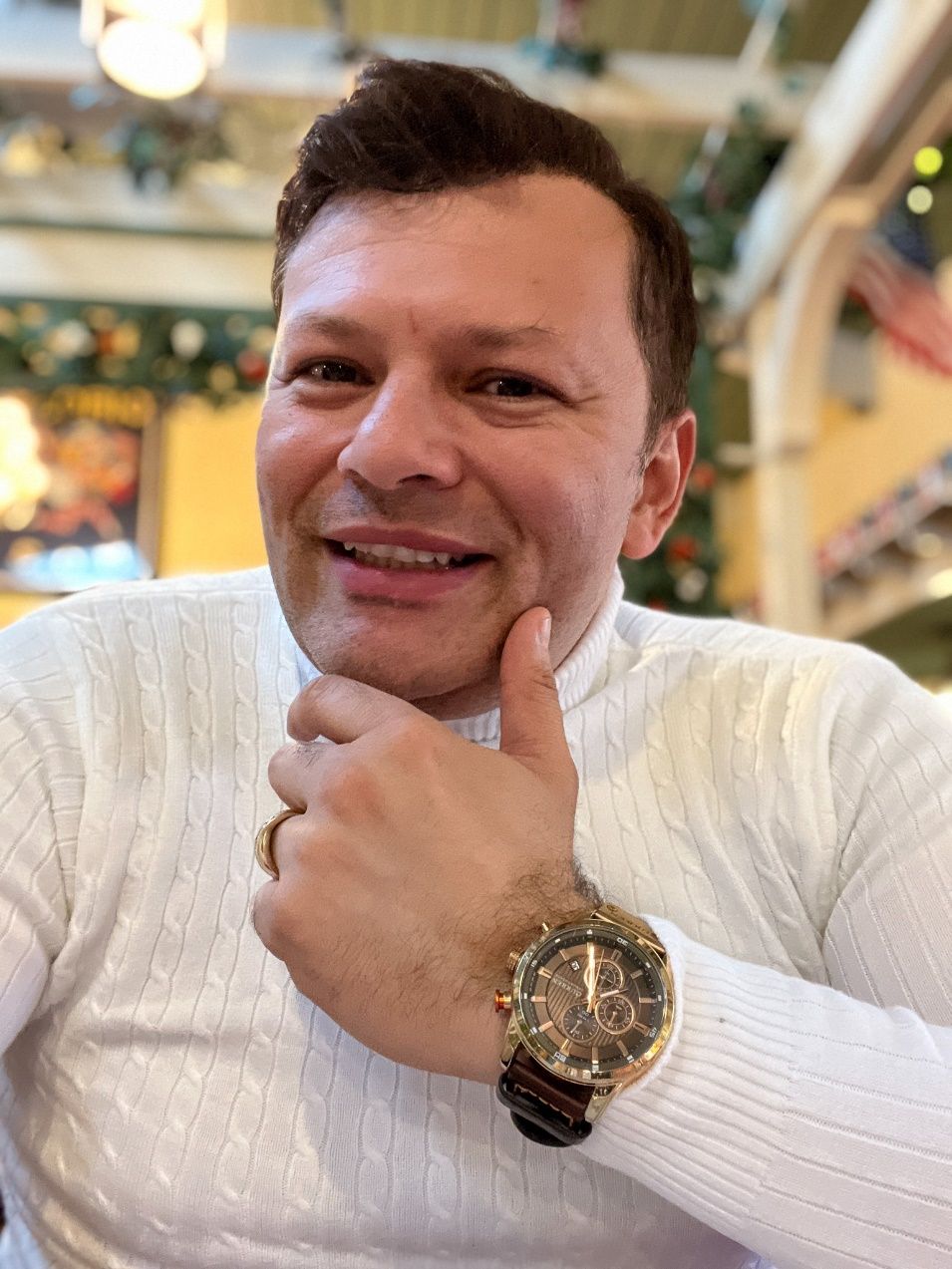
No soy el único que ha notado estos beneficios. Existen numerosos
estudios que respaldan la idea de que la música puede mejorar la
productividad. La música puede activar la liberación de dopamina, el
neurotransmisor asociado con el placer y la recompensa, lo que nos hace
sentir bien y más motivados para trabajar. Además, puede ayudar a
mejorar la concentración
Escuchar música mientras trabajo ha sido una de las mejores
decisiones que he tomado para mejorar mi productividad y bienestar
general. No solo me ayuda a mantenerme enfocado y motivado, sino que
también proporciona un alivio necesario del estrés y crea un ambiente
positivo tanto para mí como para mi equipo.
Si aún no has probado incorporar la música en tu rutina de trabajo,
te animo a que lo hagas. Encuentra los géneros y estilos que más te
inspiran y crea tus propias listas de reproducción para diferentes
momentos del día. Te sorprenderá cómo algo tan simple como escuchar tu
canción favorita puede transformar tu día de trabajo y ayudarte a
alcanzar nuevos niveles de productividad y satisfacción.
June 28, 2024
Technological Innovations Changing the Car
Industry
Since I can remember, cars have been one of my great passions. As a
child, I was fascinated not only by their speed but also by the
engineering and design behind each model. Today, as an adult, I am still
amazed by the innovations that are revolutionizing the automotive
industry. I want to share with you some of these innovations that, from
my perspective, are marking a before and after in the world of
cars.
 The
Rise of Electric Vehicles (EVs)
The
Rise of Electric Vehicles (EVs)
I can’t help but marvel at how electric vehicles are changing the
automotive landscape. A few years ago, the idea of having a car that ran
entirely on electricity seemed crazy, something out of a science fiction
novel. Today, however, EVs are everywhere and are becoming increasingly
accessible and practical.
I’ve noticed that advancements in battery technology have been
crucial for this change. New batteries are not only more durable but
also charge faster, eliminating that annoying “range anxiety.”
Additionally, charging stations are becoming more common, making life
much easier for those of us who choose this eco-friendlier
alternative.
Connected Vehicles and Cybersecurity
Something that fascinates me is how cars are becoming true extensions
of our digital lives. Connected vehicles are equipped with advanced
infotainment systems and V2X (vehicle-to-everything) communication,
allowing the car to communicate not only with other vehicles but also
with road infrastructure and even our mobile devices.
However, with this connectivity also come new challenges.
Cybersecurity has become a crucial issue. Recently, I read about several
hacking incidents in vehicle systems, highlighting the need to protect
both the car’s software and our personal data. It’s impressive to see
how the industry is responding with increasingly robust security
measures, such as advanced encryption methods and real-time
monitoring.
Autonomous Driving
If there’s one thing that really excites me, it’s the advancement of
autonomous driving. Although we’re not yet at the point where fully
autonomous vehicles are common, advanced driver assistance systems
(ADAS) are making our journeys much safer and more convenient.
Imagine being able to relax while the car takes care of everything on
a long trip. We’re already seeing cars with level 3 and level 4
capabilities, where human intervention is minimal or not required under
certain conditions. This type of technology not only promises to reduce
accidents but also to completely transform the driving experience.
Sustainability in Automotive Manufacturing
As someone deeply concerned about the environment, it fills me with
hope to see how sustainability is becoming a priority in vehicle
manufacturing. The industry is adopting more eco-friendly practices,
from using recycled materials to more efficient production
processes.

And it’s not just about reducing CO2 emissions. We’re also seeing
renewed interest in hydrogen as an energy source, especially in
commercial vehicles and heavy machinery. Although hydrogen for passenger
vehicles still faces some challenges, its potential in other segments
shows that there are multiple paths to a more sustainable future.
Consumer Technology in Vehicles
Something I love is how consumer technology is being integrated into
vehicles. It’s no longer just about driving; our cars are becoming true
centers of entertainment and connectivity. Brands like Sony and BMW are
leading the way with immersive and personalized experiences for
drivers.
For example, high-quality audio systems are filling the void left by
the quieter combustion engines of EVs. This not only enhances the
driving experience but also opens up new revenue opportunities for
manufacturers through subscription services and digital content.
The automotive industry is at an exciting crossroads. Technological
innovations are not only redefining how we build and use vehicles but
also how we interact with them. From electric vehicles and autonomous
driving to connectivity and sustainability, we’re seeing a comprehensive
transformation that promises to make our commutes safer, more efficient,
and more enjoyable.
It’s an incredible time to be a car enthusiast, and I can’t wait to
see what the future holds. Technology is driving a new era of mobility,
and we, as drivers and enthusiasts, are in the driver’s seat of this
exciting revolution.

June 28, 2024
Innovaciones Tecnológicas que Están Cambiando la Industria de
los Carros
Desde que tengo uso de razón, los carros han sido una de mis grandes
pasiones. Recuerdo que de niño me fascinaban no solo por su velocidad,
sino por la ingeniería y el diseño detrás de cada modelo. Hoy, como
adulto, sigo sorprendiéndome con las innovaciones que están
revolucionando la industria automotriz. Quiero compartir con ustedes
algunas de estas innovaciones que, desde mi perspectiva, están marcando
un antes y un después en el mundo de los autos.
 La
Ascendencia de los Vehículos Eléctricos (EVs)
La
Ascendencia de los Vehículos Eléctricos (EVs)
No puedo dejar de maravillarme con cómo los vehículos eléctricos
están cambiando el panorama automotriz. Hace unos años, la idea de tener
un carro que funcionara completamente con electricidad parecía una
locura, algo sacado de una novela de ciencia ficción. Hoy, sin embargo,
los EVs están en todas partes y se están volviendo cada vez más
accesibles y prácticos.
He notado que los avances en la tecnología de baterías han sido
cruciales para este cambio. Las nuevas baterías no solo son más
duraderas sino que también se cargan más rápido, lo que elimina esa
molesta “ansiedad de autonomía”. Además, cada vez es más común encontrar
estaciones de carga, lo que facilita mucho la vida de quienes optamos
por esta alternativa más ecológica.
Vehículos Conectados y Ciberseguridad
Algo que me parece fascinante es cómo los carros se están
convirtiendo en verdaderas extensiones de nuestra vida digital. Los
vehículos conectados están equipados con sistemas avanzados de
infoentretenimiento y comunicación V2X (vehículo a todo), permitiendo
que el auto se comunique no solo con otros vehículos, sino también con
la infraestructura vial y hasta con nuestros dispositivos móviles.
Sin embargo, con esta conectividad también vienen nuevos desafíos. La
ciberseguridad se ha vuelto un tema crucial. Hace poco leí sobre varios
incidentes de hacking en sistemas de vehículos, lo cual subraya la
necesidad de proteger tanto el software del carro como nuestros datos
personales. Es impresionante ver cómo la industria está respondiendo con
medidas de seguridad cada vez más robustas, como métodos avanzados de
encriptación y monitoreo en tiempo real.
Conducción Autónoma
Si hay algo que realmente me entusiasma es el avance de la conducción
autónoma. Aunque aún no estamos en el punto donde los vehículos
totalmente autónomos son comunes, los sistemas avanzados de asistencia
al conductor (ADAS) están haciendo que nuestros viajes sean mucho más
seguros y convenientes.
Imagínense poder relajarse mientras el carro se encarga de todo en un
viaje largo. Ya estamos viendo autos con capacidades de nivel 3 y nivel
4, donde la intervención humana es mínima o no se requiere en ciertas
condiciones. Este tipo de tecnología no solo promete reducir accidentes,
sino también transformar completamente la experiencia de
conducción.
Sostenibilidad en la Fabricación Automotriz
Como alguien que se preocupa profundamente por el medio ambiente, me
llena de esperanza ver cómo la sostenibilidad se está convirtiendo en
una prioridad en la fabricación de vehículos. La industria está
adoptando prácticas más ecológicas, desde el uso de materiales
reciclados hasta procesos de producción más eficientes.
 Y no solo se trata de reducir
las emisiones de CO2. También estamos viendo un interés renovado en el
hidrógeno como fuente de energía, especialmente en vehículos comerciales
y maquinaria pesada. Aunque el hidrógeno para vehículos de pasajeros
todavía enfrenta algunos desafíos, su potencial en otros segmentos
muestra que hay múltiples caminos hacia un futuro más sostenible.
Y no solo se trata de reducir
las emisiones de CO2. También estamos viendo un interés renovado en el
hidrógeno como fuente de energía, especialmente en vehículos comerciales
y maquinaria pesada. Aunque el hidrógeno para vehículos de pasajeros
todavía enfrenta algunos desafíos, su potencial en otros segmentos
muestra que hay múltiples caminos hacia un futuro más sostenible.
Tecnología de Consumo en los Vehículos
Algo que me encanta es cómo la tecnología de consumo está siendo
integrada en los vehículos. Ya no se trata solo de conducir; nuestros
autos están convirtiéndose en verdaderos centros de entretenimiento y
conectividad. Marcas como Sony y BMW están liderando el camino con
experiencias inmersivas y personalizadas para los conductores.
Por ejemplo, los sistemas de audio de alta calidad están llenando el
vacío dejado por los motores de combustión más silenciosos de los EVs.
Esto no solo mejora la experiencia de conducción, sino que también abre
nuevas oportunidades de ingresos para los fabricantes a través de
servicios de suscripción y contenido digital.
La industria automotriz está en una encrucijada emocionante. Las
innovaciones tecnológicas no solo están redefiniendo cómo construimos y
usamos los vehículos, sino también cómo interactuamos con ellos. Desde
los vehículos eléctricos y la conducción autónoma hasta la conectividad
y la sostenibilidad, estamos viendo una transformación integral que
promete hacer nuestros desplazamientos más seguros, eficientes y
agradables.
Es un momento increíble para ser un apasionado de los coches, y no
puedo esperar a ver qué nos depara el futuro. La tecnología está
impulsando una nueva era de movilidad, y nosotros, como conductores y
entusiastas, estamos en el asiento del conductor de esta emocionante
revolución.

June 27, 2024
SME Day: Reflections on Starting Your Own
Business
When I think about SME Day, I can’t help but reflect on my own
journey to start my business. It was a path full of challenges and
satisfactions, marked by lessons learned and moments of personal and
professional growth. From the first idea to seeing my business flourish,
it has been an incredibly enriching experience. Today, I want to share
not only my story but also some advice that may help you if you are
thinking about starting your own business.
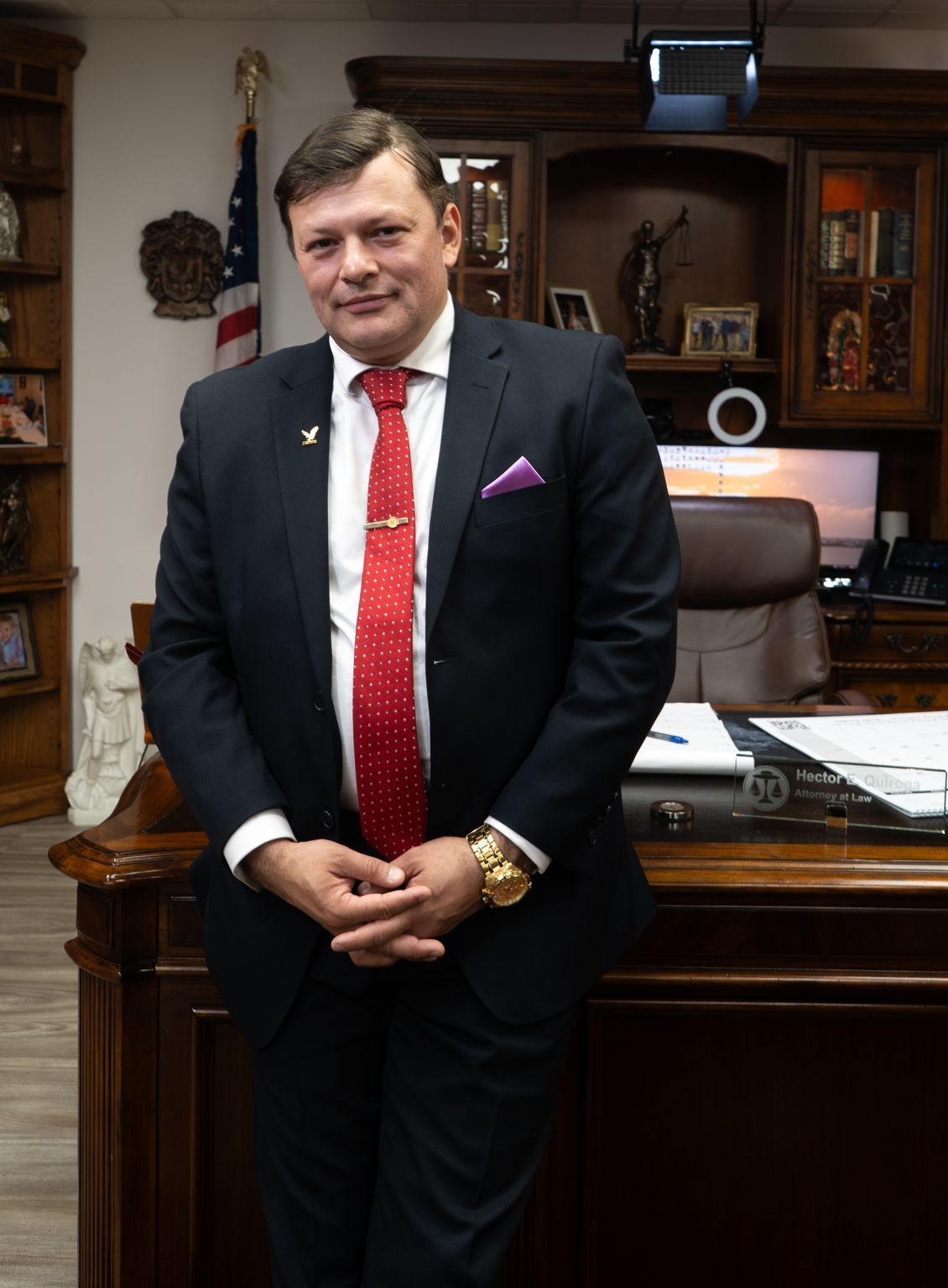
Tip 1: Find Your Passion
The first step in starting a business is finding your passion. Ask
yourself what truly motivates and excites you. Entrepreneurship is a
path full of ups and downs, and having a genuine passion for what you do
will help you overcome the difficult moments. In my case, the passion
for helping the community and making a difference was my main driving
force.
I clearly remember the moment I decided I wanted to start my own
business. It was a cold winter day, and I was sitting in the living
room, reflecting on my future. I had a stable job, but I always felt
something was missing. The idea of creating something of my own,
something I could shape and grow, fascinated me.
Finding your passion may not be immediate. Sometimes, it is the
result of multiple experiences and reflections. Take the time to explore
different interests and discover what truly fills you with enthusiasm.
Once you find your passion, you will have a solid foundation on which to
build your business.
Tip 2: Surround Yourself with a Support Network
The support of your loved ones and community is essential. Do not be
afraid to ask for help and advice. Building a solid support network can
provide you with the emotional and professional backing needed to face
the challenges of entrepreneurship. Consider seeking mentors who can
offer you guidance based on their experience.
From the beginning, the support of my family was fundamental. My
wife, Casey, was always by my side, encouraging me and helping me stay
focused. Our seven children were also a constant source of inspiration
and motivation. Every time I thought about giving up, I remembered why I
started: I wanted to build something I could leave as a legacy for
them.
In addition to my family, I found great support in my community.
Friends, colleagues, and mentors provided invaluable advice and helped
me navigate the initial challenges. I learned that there is no shame in
asking for help and that having a support network can make a big
difference. Surround yourself with people who believe in you and your
vision, and do not hesitate to turn to them when you need it.
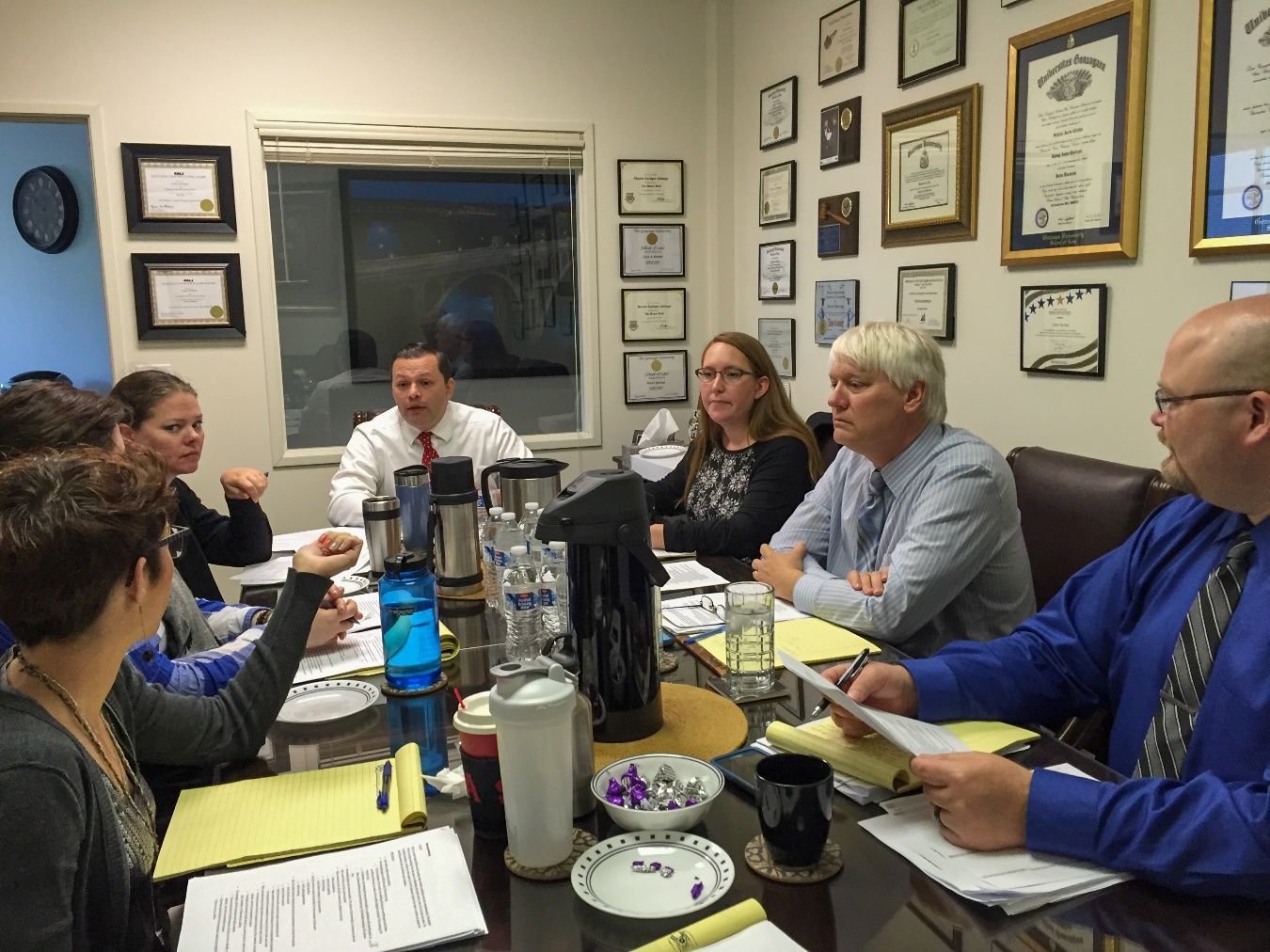 Tip
3: Prepare for Obstacles
Tip
3: Prepare for Obstacles
It is important to be prepared to face obstacles. Not everything will
go as planned, and that is okay. Learn to adapt and be resilient. Every
challenge is an opportunity to learn and grow. Maintain a positive
attitude and seek creative solutions to the problems you face.
Starting a business is not easy. The first years were full of
challenges. I remember sleepless nights, reviewing numbers and trying to
find the best way to make my business take off. There were moments when
it seemed that nothing would work and that all the effort would not be
worth it.
One of the biggest challenges was learning to manage finances. I did
not have a solid financial background, and numbers always seemed
intimidating to me. However, I realized that if I wanted my business to
succeed, I needed to understand how to manage money effectively. I took
courses, read books, and, over time, began to feel more confident in
this aspect.
Obstacles are inevitable, but the key is how you face them. See every
challenge as an opportunity to learn and improve. Maintain a resilient
attitude and do not be discouraged by setbacks. With determination and
creativity, you can overcome any obstacle that comes your way.
Tip 4: Be Flexible and Open to Change
Adaptability is key to business success. Stay informed about market
trends and do not be afraid to pivot if necessary. The ability to adjust
your strategy and operations can make the difference between success and
failure.
Along the way, I learned many valuable lessons. One of the most
important was the importance of adaptability. The market is constantly
changing, and businesses need to be flexible to survive. This became
even more evident during the snowstorm that affected our region,
teaching me about adaptability and resilience.
During that storm, many of our operations were disrupted. However,
instead of getting discouraged, we looked for ways to adapt to the
situation. We implemented technological solutions that allowed us to
continue operating remotely and maintained constant communication with
our clients. This experience taught us to be more flexible and to be
prepared for any eventuality.
 Tip
5: Celebrate Your Successes
Tip
5: Celebrate Your Successes
Do not forget to celebrate your achievements, no matter how small
they are. Recognizing and appreciating your successes will help you stay
motivated and remember why you started. These moments of celebration are
essential to maintaining a positive attitude and moving forward.
Despite the challenges, the satisfaction of seeing my business grow
and prosper has been immense. There is nothing like the feeling of
having created something from scratch and seeing it take shape and
become something significant. Every achievement, no matter how small, is
worth celebrating.
Seeing my employees committed and happy, receiving positive feedback
from clients, and knowing that I am making a difference in the community
is incredibly gratifying. All the effort, sleepless nights, and moments
of doubt have been worth it.
Throughout your entrepreneurial journey, take the time to celebrate
every success. These moments of recognition will help you stay motivated
and remember why you started. Celebrate your achievements with your
team, your family, and your community. These moments of celebration are
essential to maintaining a positive attitude and moving forward.
As I reflect on my entrepreneurial journey, I feel grateful for all
the experiences and lessons learned. Starting a business is not easy,
but it is one of the most rewarding decisions I have made. If you are
thinking about starting your own business, I encourage you to do it. It
will not be an easy path, but with passion, dedication, and the right
support, you can achieve it.
Always remember why you started and keep your vision clear.
Challenges will come, but so will the moments of triumph. Celebrate
every small achievement and learn from every obstacle. In the end, you
will see that all the effort was worth it.
June 27, 2024
Día de las PYMES: Reflexiones sobre el Empezar tu Propia
Empresa
Cuando pienso en el Día de las PYMES, no puedo evitar reflexionar
sobre mi propio viaje para comenzar mi empresa. Fue un camino lleno de
desafíos y satisfacciones, marcado por lecciones aprendidas y momentos
de crecimiento personal y profesional. Desde la primera idea hasta ver
mi negocio florecer, ha sido una experiencia increíblemente
enriquecedora. Hoy, quiero compartir no solo mi historia, sino también
algunos consejos que pueden ayudarte si estás pensando en
emprender.

Consejo 1: Encuentra tu Pasión
El primer paso para iniciar una empresa es encontrar tu pasión.
Pregúntate a ti mismo qué es lo que realmente te motiva y entusiasma.
Emprender es un camino lleno de altos y bajos, y tener una pasión
genuina por lo que haces te ayudará a superar los momentos difíciles. En
mi caso, la pasión por ayudar a la comunidad y hacer una diferencia fue
mi motor principal.
Recuerdo claramente el momento en que decidí que quería empezar mi
propia empresa. Era un día frío de invierno, y estaba sentado en la sala
de estar, reflexionando sobre mi futuro. Tenía un trabajo estable, pero
siempre había sentido que faltaba algo. La idea de crear algo propio,
algo que pudiera moldear y hacer crecer, me resultaba fascinante.
Encontrar tu pasión puede no ser inmediato. A veces, es el resultado
de múltiples experiencias y reflexiones. Tómate el tiempo para explorar
diferentes intereses y descubrir qué es lo que realmente te llena de
entusiasmo. Una vez que encuentres tu pasión, tendrás una base sólida
sobre la cual construir tu empresa.
Consejo 2: Rodéate de una Red de Apoyo
El apoyo de tus seres queridos y de tu comunidad es esencial. No
tengas miedo de pedir ayuda y consejo. Construir una red de apoyo sólida
puede proporcionarte el respaldo emocional y profesional necesario para
afrontar los desafíos del emprendimiento. Considera buscar mentores que
puedan ofrecerte orientación basada en su experiencia.
Desde el principio, el apoyo de mi familia fue fundamental. Mi
esposa, Casey, siempre estuvo a mi lado, alentándome y ayudándome a
mantenerme enfocado. Nuestros siete hijos también fueron una fuente
constante de inspiración y motivación. Cada vez que pensaba en rendirme,
recordaba por qué había comenzado: quería construir algo que pudiera
dejarles como legado.
Además de mi familia, encontré un gran apoyo en mi comunidad. Amigos,
colegas y mentores me brindaron consejos invaluables y me ayudaron a
navegar los desafíos iniciales. Aprendí que no hay vergüenza en pedir
ayuda y que contar con una red de apoyo puede marcar una gran
diferencia. Rodéate de personas que crean en ti y en tu visión, y no
dudes en recurrir a ellos cuando lo necesites.

Consejo 3: Prepárate para los Obstáculos
Es importante estar preparado para enfrentar obstáculos. No todo
saldrá según lo planeado, y eso está bien. Aprende a adaptarte y a ser
resiliente. Cada desafío es una oportunidad para aprender y crecer.
Mantén una actitud positiva y busca soluciones creativas a los problemas
que enfrentes.
Iniciar una empresa no es fácil. Los primeros años estuvieron llenos
de desafíos. Recuerdo las noches en vela, revisando números y tratando
de encontrar la mejor manera de hacer que mi negocio despegara. Había
momentos en los que parecía que nada iba a funcionar y que todo el
esfuerzo no valdría la pena.
Uno de los mayores desafíos fue aprender a manejar las finanzas. No
tenía una formación financiera sólida, y los números siempre me habían
parecido intimidantes. Sin embargo, me di cuenta de que, si quería que
mi empresa tuviera éxito, necesitaba entender cómo manejar el dinero de
manera efectiva. Tomé cursos, leí libros y, con el tiempo, comencé a
sentirme más seguro en este aspecto.
Los obstáculos son inevitables, pero la clave está en cómo los
afrontas. Ve cada desafío como una oportunidad para aprender y mejorar.
Mantén una actitud resiliente y no te desanimes por los contratiempos.
Con determinación y creatividad, podrás superar cualquier obstáculo que
se te presente.
Consejo 4: Sé Flexible y Abierto al Cambio
La adaptabilidad es clave para el éxito empresarial. Mantente
informado sobre las tendencias del mercado y no tengas miedo de pivotar
si es necesario. La capacidad de ajustar tu estrategia y tus operaciones
puede marcar la diferencia entre el éxito y el fracaso.
A lo largo del camino, aprendí muchas lecciones valiosas. Una de las
más importantes fue la importancia de la adaptabilidad. El mercado
cambia constantemente, y las empresas necesitan ser flexibles para
sobrevivir. Esto se hizo aún más evidente durante la tormenta de nieve
que afectó nuestra región, enseñándome sobre la adaptabilidad y la
resiliencia.
Durante esa tormenta, muchas de nuestras operaciones se vieron
interrumpidas. Sin embargo, en lugar de desanimarnos, buscamos formas de
adaptarnos a la situación. Implementamos soluciones tecnológicas que nos
permitieron continuar operando de manera remota y mantuvimos una
comunicación constante con nuestros clientes. Esta experiencia nos
enseñó a ser más flexibles y a estar preparados para cualquier
eventualidad.
 Consejo
5: Celebra tus Éxitos
Consejo
5: Celebra tus Éxitos
No olvides celebrar tus logros, por pequeños que sean. Reconocer y
apreciar tus éxitos te ayudará a mantenerte motivado y a recordar por
qué empezaste. Estos momentos de celebración son esenciales para
mantener una actitud positiva y seguir adelante.
A pesar de los desafíos, la satisfacción de ver mi empresa crecer y
prosperar ha sido inmensa. No hay nada como la sensación de haber creado
algo desde cero y ver cómo toma forma y se convierte en algo
significativo. Cada logro, por pequeño que sea, es motivo de
celebración.
Ver a mis empleados comprometidos y felices, recibir comentarios
positivos de los clientes y saber que estoy haciendo una diferencia en
la comunidad es increíblemente gratificante. Todo el esfuerzo, las
noches de insomnio y los momentos de duda han valido la pena.
A lo largo de tu viaje empresarial, tómate el tiempo para celebrar
cada éxito. Estos momentos de reconocimiento te ayudarán a mantenerte
motivado y a recordar por qué empezaste. Celebra tus logros con tu
equipo, tu familia y tu comunidad. Estos momentos de celebración son
esenciales para mantener una actitud positiva y seguir adelante.
Al reflexionar sobre mi viaje empresarial, me siento agradecido por
todas las experiencias y lecciones aprendidas. Empezar una empresa no es
fácil, pero es una de las decisiones más gratificantes que he tomado. Si
estás pensando en iniciar tu propio negocio, te animo a que lo hagas. No
será un camino fácil, pero con pasión, dedicación y el apoyo adecuado,
puedes lograrlo.
Recuerda siempre por qué empezaste y mantén tu visión clara. Los
desafíos vendrán, pero también lo harán los momentos de triunfo. Celebra
cada pequeño logro y aprende de cada obstáculo. Al final, verás que todo
el esfuerzo habrá valido la pena.
June 26, 2024
My Experience with AI-Powered Virtual Assistants: A
Productivity Game Changer
As an entrepreneur, the constant quest for tools that enhance my
productivity is almost second nature. Time management and efficiency are
fundamental pillars in my daily routine. A few years ago, I found myself
at a crossroads where administrative and operational tasks began to
consume a significant portion of my time, preventing me from focusing on
strategies and business growth. It was at that moment that I started
exploring technological solutions and discovered the potential of
AI-powered virtual assistants.
 The overload of routine tasks
such as responding to emails, coordinating meetings, and following up on
projects was overwhelming. I realized I needed a solution that could
efficiently handle these tasks and free up my time to focus on strategic
decisions. That’s how I began researching virtual assistants, an
emerging technology that promised to transform the way we manage our
daily obligations.
The overload of routine tasks
such as responding to emails, coordinating meetings, and following up on
projects was overwhelming. I realized I needed a solution that could
efficiently handle these tasks and free up my time to focus on strategic
decisions. That’s how I began researching virtual assistants, an
emerging technology that promised to transform the way we manage our
daily obligations.
The Impact on Decision-Making
One of the most revolutionary aspects of virtual assistants has been
their ability to assist in decision-making. Based on historical data and
behavioral patterns, the assistant can provide detailed analyses and
recommendations that have allowed me to make more informed decisions.
For example, in project performance analysis, the assistant can identify
trends that might go unnoticed in a manual review.
The precision and speed with which the assistant can process large
volumes of data are impressive. Instead of spending hours reviewing
reports and statistics, I can get a clear and concise summary of the
most relevant points, enabling me to make faster and more accurate
decisions. This real-time analysis capability has been invaluable in
maintaining my business’s competitiveness in an ever-changing
environment.
Personalization and Adaptability
One aspect I greatly value in my virtual assistant is its
personalization capability. As I’ve interacted more with it, it has
learned my preferences and work style. This adaptability means that the
assistant not only performs tasks efficiently but also in a manner that
aligns with my way of working. From personalized reminders to
adjustments in communication style, this adaptive capacity has made the
interaction more fluid and natural.
Personalization goes beyond simple user preferences; it extends to
the assistant’s ability to anticipate my needs. For instance, the
assistant can suggest adjustments to my schedule based on previous work
patterns or even recommend breaks when it detects a particularly high
workload. This almost symbiotic relationship has made my interaction
with technology more intuitive and less disruptive.

Integration with the Work Ecosystem
Integration with other tools and platforms has been crucial. I use a
variety of software for project management, internal communication, and
financial analysis. The virtual assistant has seamlessly integrated with
all these tools, creating a cohesive work environment. This integration
has improved operational efficiency and facilitated better collaboration
among team members.
The assistant’s ability to function as a central hub has been
particularly beneficial. It can extract information from various
sources, compile it into an accessible format, and present it
coherently. This capability has significantly reduced the time we spend
searching for information and improved the accuracy of our data,
allowing us to make more informed and strategic decisions.
Reflections on Efficiency
Efficiency is a constant in the business world. The adoption of
AI-powered virtual assistants has been a key factor in my ability to
maintain and improve this efficiency. Not only have I significantly
reduced the time spent on administrative tasks, but I’ve also improved
the accuracy and effectiveness of my business decisions. This change has
allowed my team and me to focus on what truly matters: innovating and
growing.
 The efficiency gained through
AI is not only reflected in time savings but also in the quality of work
performed. By eliminating the burden of repetitive and administrative
tasks, I can devote more energy and resources to innovation and business
expansion. This redistribution of time and effort has been a fundamental
change in how I operate, allowing me to reach new levels of success and
professional satisfaction.
The efficiency gained through
AI is not only reflected in time savings but also in the quality of work
performed. By eliminating the burden of repetitive and administrative
tasks, I can devote more energy and resources to innovation and business
expansion. This redistribution of time and effort has been a fundamental
change in how I operate, allowing me to reach new levels of success and
professional satisfaction.
The Future of Virtual Assistants
Looking to the future, I am excited about the possibilities that AI
advancements will bring. Virtual assistants are becoming increasingly
sophisticated, and I am confident that their ability to enhance
productivity will only continue to grow. I am already exploring new
functionalities and applications that can further integrate into our
workflow.
The evolution of AI promises not only to improve the current
capabilities of virtual assistants but also to open new opportunities to
innovate and transform the way we work. I am particularly interested in
AI applications that can offer predictive analysis and proactive
support, anticipating needs and problems before they arise. This level
of intelligence and adaptability will profoundly impact business
productivity and efficiency.
The adoption of virtual assistants has made a significant difference
in my professional life. They have enabled me to overcome daily
challenges and focus on what truly matters. If you are looking for a way
to transform your productivity and efficiency, AI-powered virtual
assistants may be the tool you need to take your business to the next
level.
June 26, 2024
Mi experiencia con asistentes virtuales impulsados por IA: Un
cambio en la productividad
Como empresario, la búsqueda constante de herramientas que mejoren mi
productividad es casi una segunda naturaleza. La gestión del tiempo y la
eficiencia son pilares fundamentales en mi día a día. Hace algunos años,
me encontré en una encrucijada donde las tareas administrativas y
operativas comenzaban a consumir una porción significativa de mi tiempo,
lo que me impedía enfocarme en estrategias y crecimiento empresarial.
Fue en ese momento cuando empecé a explorar soluciones tecnológicas y
descubrí el potencial de los asistentes virtuales impulsados por
inteligencia artificial (IA).
 La sobrecarga de tareas
rutinarias como responder correos electrónicos, coordinar reuniones y
realizar seguimientos de proyectos era abrumadora. Me di cuenta de que
necesitaba una solución que pudiera manejar estas tareas de manera
eficiente y liberar mi tiempo para concentrarme en decisiones
estratégicas. Así fue como comencé a investigar sobre los asistentes
virtuales, una tecnología emergente que prometía transformar la manera
en que manejamos nuestras obligaciones diarias.
La sobrecarga de tareas
rutinarias como responder correos electrónicos, coordinar reuniones y
realizar seguimientos de proyectos era abrumadora. Me di cuenta de que
necesitaba una solución que pudiera manejar estas tareas de manera
eficiente y liberar mi tiempo para concentrarme en decisiones
estratégicas. Así fue como comencé a investigar sobre los asistentes
virtuales, una tecnología emergente que prometía transformar la manera
en que manejamos nuestras obligaciones diarias.
El impacto en la toma de decisiones
Uno de los aspectos más revolucionarios de los asistentes virtuales
ha sido su capacidad para asistir en la toma de decisiones. Basándose en
datos históricos y patrones de comportamiento, el asistente puede
proporcionar análisis detallados y recomendaciones que me han permitido
tomar decisiones más informadas. Por ejemplo, en el análisis de
rendimiento de proyectos, el asistente puede identificar tendencias que
podrían pasar desapercibidas en una revisión manual.
La precisión y velocidad con la que el asistente puede procesar
grandes volúmenes de datos es impresionante. En lugar de perder horas
revisando informes y estadísticas, puedo obtener un resumen claro y
conciso de los puntos más relevantes, lo que me permite tomar decisiones
más rápidas y precisas. Esta capacidad de análisis en tiempo real ha
sido invaluable para mantener la competitividad de mi negocio en un
entorno en constante cambio.
Personalización y adaptabilidad
Un aspecto que valoro enormemente de mi asistente virtual es su
capacidad de personalización. A medida que he ido interactuando más con
él, ha aprendido mis preferencias y estilo de trabajo. Esta
adaptabilidad significa que el asistente no solo realiza tareas de
manera eficiente, sino que también lo hace de una manera que se alinea
con mi forma de trabajar. Desde recordatorios personalizados hasta
ajustes en la manera de comunicarse, esta capacidad de adaptación ha
hecho que la interacción sea más fluida y natural.

La personalización va más allá de las simples preferencias de
usuario; se extiende a la capacidad del asistente para anticipar mis
necesidades. Por ejemplo, el asistente puede sugerir ajustes en mi
agenda basándose en patrones de trabajo anteriores o incluso recomendar
descansos cuando detecta que mi carga de trabajo es especialmente alta.
Esta relación casi simbiótica ha hecho que mi interacción con la
tecnología sea más intuitiva y menos disruptiva.
Integración con el ecosistema de trabajo
La integración con otras herramientas y plataformas ha sido crucial.
Utilizo una variedad de softwares para la gestión de proyectos,
comunicación interna y análisis financiero. El asistente virtual ha sido
capaz de integrarse sin problemas con todas estas herramientas, creando
un entorno de trabajo cohesivo. Esta integración ha mejorado la
eficiencia operativa y ha facilitado una mejor colaboración entre los
miembros del equipo.
La capacidad del asistente para funcionar como un hub central ha sido
particularmente beneficiosa. Puede extraer información de diversas
fuentes, compilarla en un formato accesible y presentarla de manera
coherente. Esta capacidad ha reducido significativamente el tiempo que
dedicamos a buscar información y ha mejorado la precisión de nuestros
datos, permitiéndonos tomar decisiones más informadas y
estratégicas.
Reflexiones sobre la eficiencia
La eficiencia es una constante en el mundo empresarial. La adopción
de asistentes virtuales impulsados por IA ha sido un factor clave en mi
capacidad para mantener y mejorar esta eficiencia. No solo he reducido
significativamente el tiempo dedicado a tareas administrativas, sino que
también he mejorado la precisión y efectividad de mis decisiones
empresariales. Este cambio ha permitido que mi equipo y yo nos
enfoquemos en lo que realmente importa: innovar y crecer.
 La eficiencia obtenida a
través de la IA no solo se refleja en el ahorro de tiempo, sino también
en la calidad del trabajo realizado. Al eliminar la carga de tareas
repetitivas y administrativas, puedo dedicar más energía y recursos a la
innovación y la expansión de mi negocio. Esta redistribución del tiempo
y esfuerzo ha sido un cambio fundamental en la manera en que opero,
permitiéndome alcanzar nuevos niveles de éxito y satisfacción
profesional.
La eficiencia obtenida a
través de la IA no solo se refleja en el ahorro de tiempo, sino también
en la calidad del trabajo realizado. Al eliminar la carga de tareas
repetitivas y administrativas, puedo dedicar más energía y recursos a la
innovación y la expansión de mi negocio. Esta redistribución del tiempo
y esfuerzo ha sido un cambio fundamental en la manera en que opero,
permitiéndome alcanzar nuevos niveles de éxito y satisfacción
profesional.
Futuro de los asistentes virtuales
Mirando hacia el futuro, estoy entusiasmado por las posibilidades que
traerán los avances en IA. Los asistentes virtuales se están volviendo
cada vez más sofisticados, y estoy seguro de que su capacidad para
mejorar la productividad solo continuará creciendo. Ya estoy explorando
nuevas funcionalidades y aplicaciones que puedan integrarse aún más en
nuestro flujo de trabajo.
La evolución de la IA promete no solo mejorar las capacidades
actuales de los asistentes virtuales, sino también abrir nuevas
oportunidades para innovar y transformar la manera en que trabajamos.
Estoy especialmente interesado en las aplicaciones de IA que pueden
ofrecer análisis predictivos y soporte proactivo, anticipando
necesidades y problemas antes de que surjan. Este nivel de inteligencia
y adaptabilidad tendrá un impacto profundo en la productividad y
eficiencia empresarial.
La adopción de asistentes virtuales ha marcado una diferencia
significativa en mi vida profesional. Me han permitido superar desafíos
diarios y enfocarme en lo que realmente importa. Si buscas una manera de
transformar tu productividad y eficiencia, los asistentes virtuales
impulsados por IA pueden ser la herramienta que necesitas para llevar tu
negocio al siguiente nivel.
June 25, 2024
The 7 Essential Parts of a Business According to My
Experience
I have spent several years in the business world, and during this
time, I have learned a lot about what truly makes a company work. I have
gone through many experiences, some more difficult than others, but each
one has taught me a valuable lesson. I want to share with you the seven
parts that I consider essential for any business, based on my personal
experience. Each of these parts has been crucial on my path to success,
and I hope they can be helpful for those who are starting out or looking
to improve their own businesses.
1. Mindset, Spirit. Why Start the Business?
The first and most important component of any business is the
mindset, the spirit with which it is started. I remember when I decided
to open my own office. It was not a decision made lightly. There was a
burning desire to create something meaningful, to help the immigrant
community in the United States, and to prove that, no matter where we
come from, we can achieve great things. This clear purpose has sustained
me through difficult times and given me the energy to keep going. It is
essential to be clear about why you start a business and keep that
purpose in mind every day.
2. The Importance of Marketing
Once you are clear about why you are in business, you need others to
know it too. This is where marketing comes into play. I remember that at
the beginning, I did not have many resources for large advertising
campaigns, but I used the tools at my disposal: social media,
word-of-mouth recommendations, and community events. Marketing is not
just advertising; it is telling your story, connecting with your
customers, and making them feel that you are the best option for them.
Over time, I learned that investing in marketing is investing in the
future of your company.
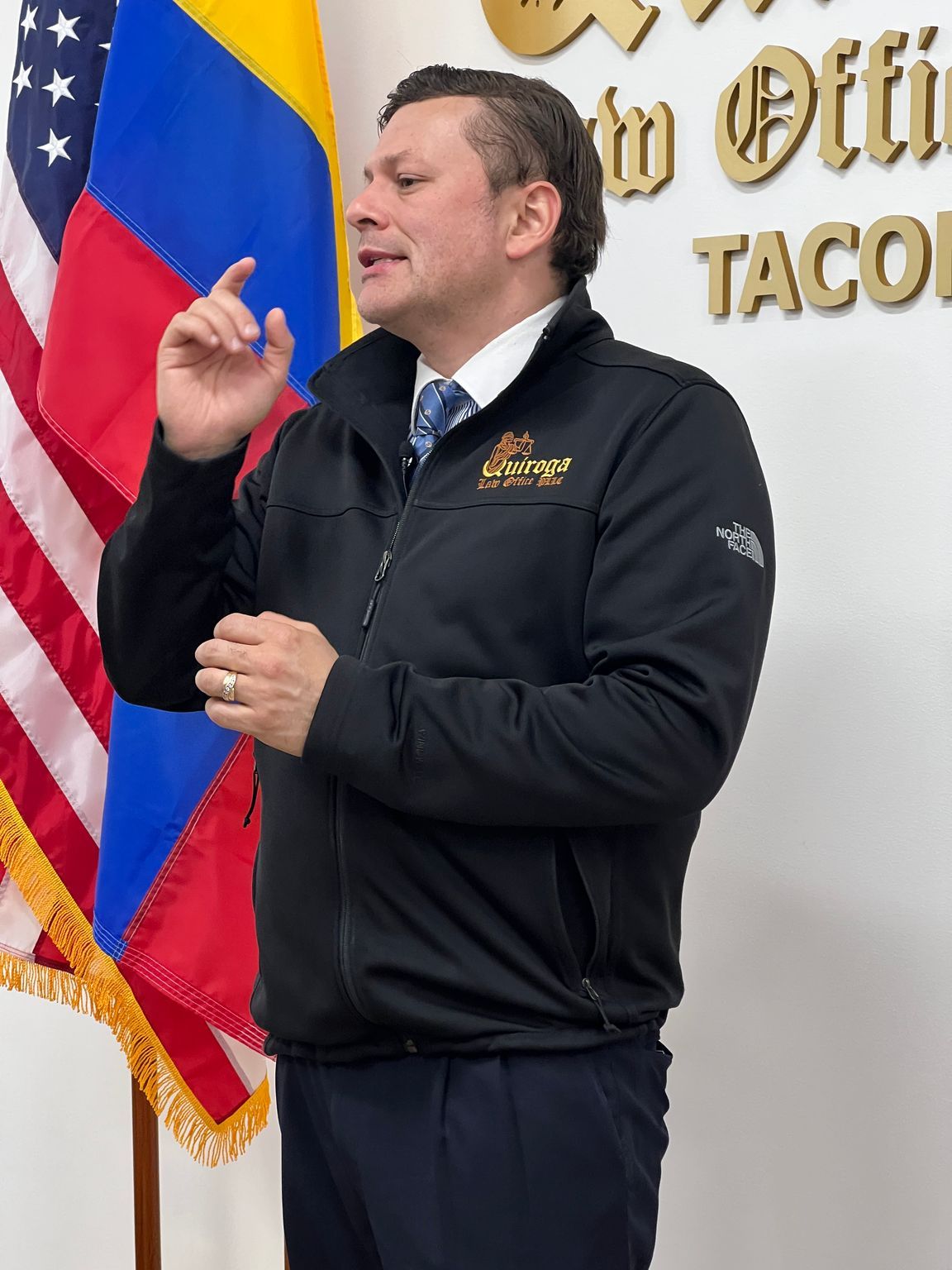 3.
Sales — From Prospects to Contracts
3.
Sales — From Prospects to Contracts
Marketing attracts prospects, but sales convert them into contracts.
I learned that selling is not just about offering a product or service,
but about building relationships of trust. At first, I was very nervous
about talking to potential clients, but over time I understood that
sales are more effective when you focus on the client’s needs and how
you can help them. Listening, understanding, and offering clear
solutions are key in this process. Converting prospects into contracts
requires patience and communication skills, but it is essential for the
growth of any company.
4. Physical Premises
The location and physical environment of your business also play a
crucial role. I remember when I was finally able to open an office in a
good location. It is not just about having a nice place; the physical
premises must be accessible, functional, and reflect the image of your
company. A well-organized and pleasant office can improve employee
morale and customer confidence. It is a space where the dreams and goals
of the business materialize, so it is important to invest in a place
that inspires and facilitates daily work.
5. Personnel
The team that surrounds you is one of the most important assets of
your company. I have been fortunate to have incredible people who share
my vision and are committed to the success of our office. Selecting and
maintaining a good team is not easy. It is essential to look for people
who not only have the necessary skills but also share the values and
culture of the company. The motivation and well-being of the personnel
are crucial for the efficient and harmonious operation of any
business.
6. Production (Procedures, How the Process is
Managed)
A company without clear procedures is like a ship without a rudder.
From the beginning, I realized the importance of having well-defined
processes for every aspect of the business. This not only ensures the
quality and consistency of our services but also facilitates the
training of new employees and improves operational efficiency.
Documenting each step of the process, from client acquisition to the
final delivery of the service, has been a practice that has allowed me
to maintain control and continuously improve.
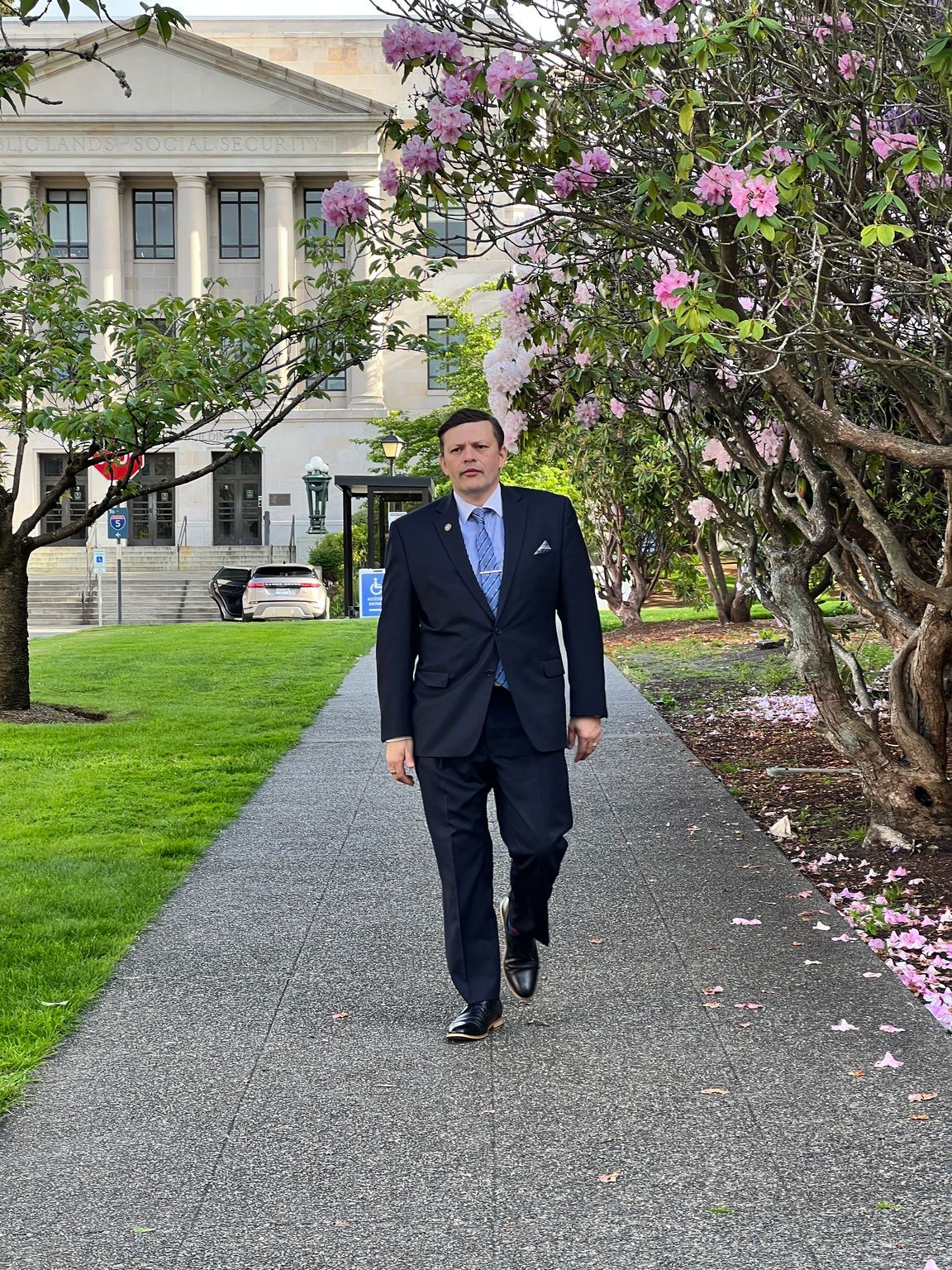 7.
Metrics and Financial Goals
7.
Metrics and Financial Goals
Last but not least, are the metrics and financial goals. From the
start, I set clear and measurable goals for my company. This has allowed
me to evaluate our progress and make adjustments when necessary.
Financial metrics are not just numbers; they are indicators that show
you if you are on the right track. Establishing a budget, monitoring
expenses and income, and regularly analyzing financial results have
helped me make informed decisions and ensure the long-term
sustainability of the company.
Each of these seven parts has been crucial in my business journey. By
sharing my experience, I hope you can find inspiration and some
practical ideas to apply in your own businesses. Entrepreneurship is not
easy, but with the right mindset, a good team, defined processes, and a
clear vision, anything is possible.
.: archivos & buscar :.
 La
base de todo: La familia
La
base de todo: La familia 
 A
lo largo de los años, he visto cómo estos rituales han evolucionado y se
han adaptado a nuestras necesidades cambiantes. Sin embargo, la esencia
de estos rituales, que es crear momentos significativos y fortalecer los
lazos, ha permanecido constante. Estoy convencido de que estos rituales
continuarán desempeñando un papel vital en nuestras vidas y en el éxito
de nuestro negocio en el futuro. Invito a todos los padres y empresarios
a reflexionar sobre la importancia de los rituales en sus propias vidas
y a encontrar maneras de integrarlos en su rutina diaria.
A
lo largo de los años, he visto cómo estos rituales han evolucionado y se
han adaptado a nuestras necesidades cambiantes. Sin embargo, la esencia
de estos rituales, que es crear momentos significativos y fortalecer los
lazos, ha permanecido constante. Estoy convencido de que estos rituales
continuarán desempeñando un papel vital en nuestras vidas y en el éxito
de nuestro negocio en el futuro. Invito a todos los padres y empresarios
a reflexionar sobre la importancia de los rituales en sus propias vidas
y a encontrar maneras de integrarlos en su rutina diaria. 




 The
Rise of Electric Vehicles (EVs)
The
Rise of Electric Vehicles (EVs) 


 Tip
3: Prepare for Obstacles
Tip
3: Prepare for Obstacles  Tip
5: Celebrate Your Successes
Tip
5: Celebrate Your Successes  The overload of routine tasks
such as responding to emails, coordinating meetings, and following up on
projects was overwhelming. I realized I needed a solution that could
efficiently handle these tasks and free up my time to focus on strategic
decisions. That’s how I began researching virtual assistants, an
emerging technology that promised to transform the way we manage our
daily obligations.
The overload of routine tasks
such as responding to emails, coordinating meetings, and following up on
projects was overwhelming. I realized I needed a solution that could
efficiently handle these tasks and free up my time to focus on strategic
decisions. That’s how I began researching virtual assistants, an
emerging technology that promised to transform the way we manage our
daily obligations.
 The efficiency gained through
AI is not only reflected in time savings but also in the quality of work
performed. By eliminating the burden of repetitive and administrative
tasks, I can devote more energy and resources to innovation and business
expansion. This redistribution of time and effort has been a fundamental
change in how I operate, allowing me to reach new levels of success and
professional satisfaction.
The efficiency gained through
AI is not only reflected in time savings but also in the quality of work
performed. By eliminating the burden of repetitive and administrative
tasks, I can devote more energy and resources to innovation and business
expansion. This redistribution of time and effort has been a fundamental
change in how I operate, allowing me to reach new levels of success and
professional satisfaction. 3.
Sales — From Prospects to Contracts
3.
Sales — From Prospects to Contracts  7.
Metrics and Financial Goals
7.
Metrics and Financial Goals